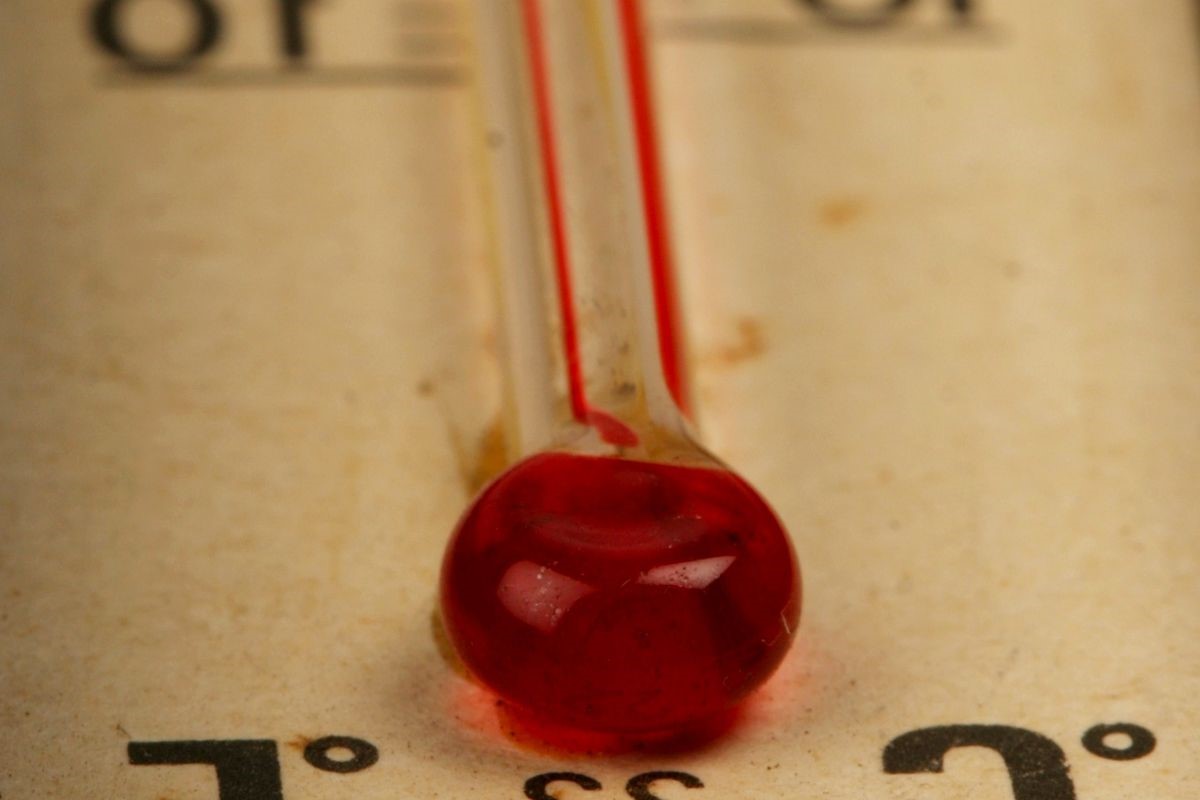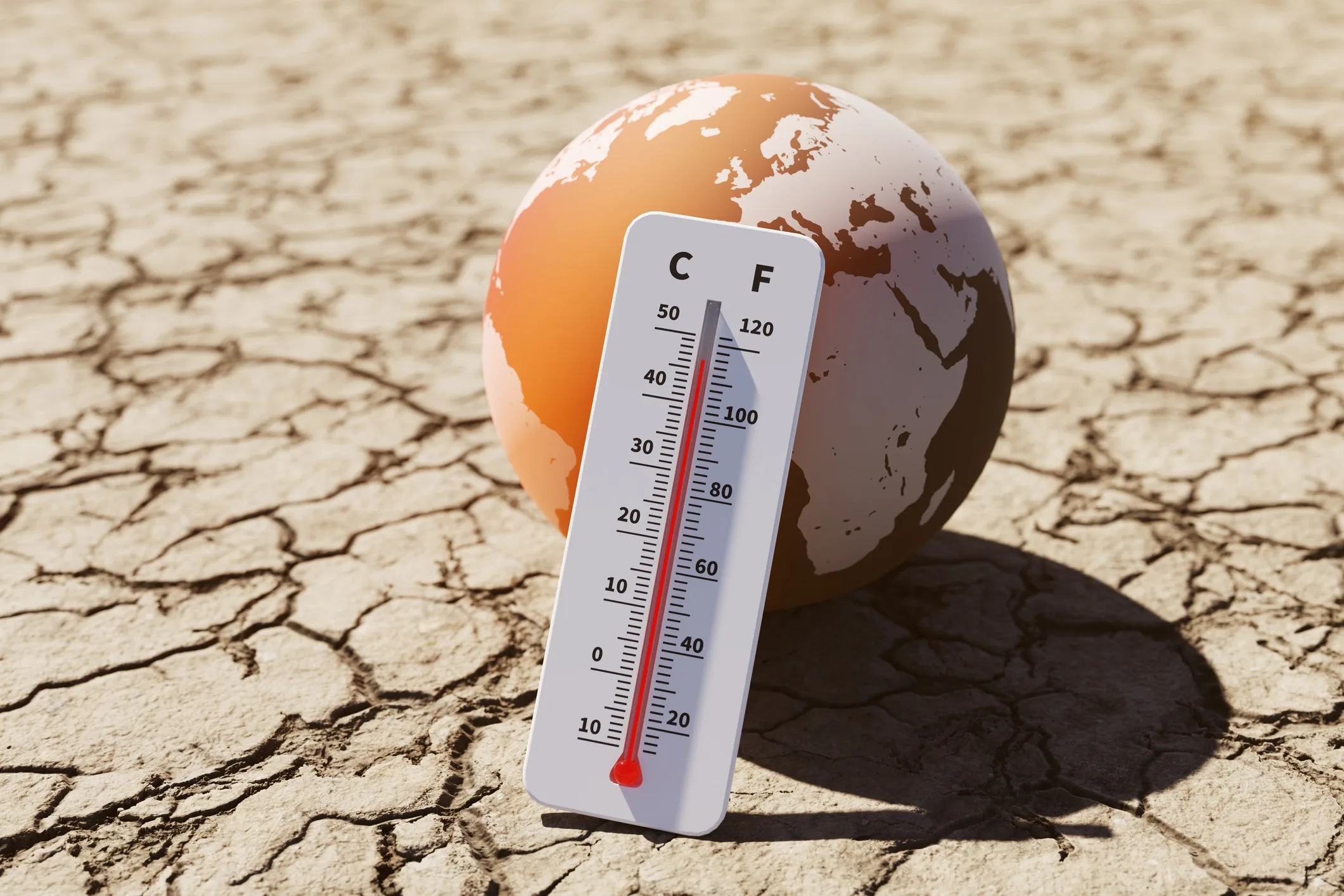Home>Weather and Climate>Converting Fahrenheit To Celsius: A Comprehensive Guide


Weather and Climate
Converting Fahrenheit To Celsius: A Comprehensive Guide
Modified: April 28, 2024
Learn how to convert Fahrenheit to Celsius with our comprehensive guide. Understand the impact of weather and climate on temperature conversions. Start converting today!
(Many of the links in this article redirect to a specific reviewed product. Your purchase of these products through affiliate links helps to generate commission for Temperatures.com, at no extra cost. Learn more)
Table of Contents
Introduction
Weather and climate play a significant role in our daily lives, influencing everything from our clothing choices to our outdoor activities. Understanding temperature measurements is crucial for making informed decisions, whether it's planning a weekend getaway or preparing for seasonal changes. One of the most common temperature scales used worldwide is the Fahrenheit scale, which is prevalent in the United States, and the Celsius scale, widely adopted in most other countries. While these scales may seem distinct, the ability to convert temperatures between them is a valuable skill that can enhance our comprehension of weather patterns and climate variations.
In this comprehensive guide, we will delve into the intricacies of converting temperatures from Fahrenheit to Celsius. By unraveling the fundamental principles behind these temperature scales and providing practical conversion techniques, this guide aims to empower readers with the knowledge and confidence to navigate temperature measurements seamlessly. Whether you're a weather enthusiast, a student studying meteorology, or simply someone curious about the science of temperature, this guide will equip you with the essential tools to effortlessly convert temperatures and gain a deeper understanding of the weather and climate around you.
Understanding the Fahrenheit and Celsius scales is the first step toward mastering temperature conversions. Let's embark on this enlightening journey to unravel the mysteries of temperature measurement and conversion.
Understanding the Fahrenheit and Celsius Scales
The Fahrenheit and Celsius scales are two of the most widely recognized systems for measuring temperature. Understanding the distinctions between these scales is essential for interpreting weather forecasts, comprehending climate data, and engaging in scientific discussions related to temperature.
Fahrenheit Scale
The Fahrenheit scale, developed by Daniel Gabriel Fahrenheit in the early 18th century, is primarily used in the United States and a few other countries. On this scale, the freezing point of water is set at 32 degrees, while the boiling point of water is defined as 212 degrees under standard atmospheric pressure. The scale is based on a mixture of historical references and practical considerations, with 0°F initially established as the lowest temperature achievable using a mixture of ice, water, and ammonium chloride.
Celsius Scale
In contrast, the Celsius scale, also known as the centigrade scale, is the standard unit of temperature measurement in most countries worldwide. It was developed by Anders Celsius in the mid-18th century. The Celsius scale sets the freezing point of water at 0 degrees and the boiling point at 100 degrees under standard atmospheric pressure. This scale is widely embraced due to its simplicity and alignment with the metric system, making it a fundamental component of scientific research and everyday temperature measurements.
Key Differences
The disparity between the two scales lies in their reference points and degree intervals. The Fahrenheit scale employs a smaller degree interval compared to the Celsius scale, resulting in more precise temperature measurements. However, the Celsius scale offers a more intuitive and straightforward representation of temperature, particularly in scientific contexts and everyday use.
Understanding the fundamental disparities between the Fahrenheit and Celsius scales is crucial for interpreting temperature data accurately and efficiently. As we delve deeper into the conversion process, this foundational knowledge will serve as a cornerstone for mastering the art of converting temperatures from Fahrenheit to Celsius.
The Formula for Converting Fahrenheit to Celsius
Converting temperatures from Fahrenheit to Celsius involves a straightforward yet essential formula that allows for seamless conversion between these two temperature scales. The conversion formula is a fundamental tool for anyone seeking to interpret temperature data accurately and efficiently.
The formula for converting Fahrenheit to Celsius is as follows:
[ C = frac{5}{9} times (F – 32) ]
In this formula:
- ( C ) represents the temperature in Celsius
- ( F ) represents the temperature in Fahrenheit
To execute the conversion, simply subtract 32 from the Fahrenheit temperature, then multiply the result by 5/9. This systematic approach yields the equivalent temperature in Celsius, enabling individuals to interpret and compare temperature measurements across different scales.
Understanding the rationale behind this formula is pivotal for grasping the relationship between Fahrenheit and Celsius temperatures. The subtraction of 32 accounts for the disparity in the reference points between the two scales, aligning the temperatures to a common baseline. The subsequent multiplication by 5/9 serves to adjust the temperature proportionally, ensuring a precise and accurate conversion.
By internalizing this conversion formula, individuals can effortlessly convert temperatures from Fahrenheit to Celsius, facilitating a deeper understanding of weather forecasts, climate data, and scientific temperature measurements. This formula serves as a valuable tool for meteorologists, researchers, students, and weather enthusiasts, empowering them to navigate temperature conversions with confidence and precision.
As we delve into practical examples and specific temperature conversions, the proficiency in applying this formula will become increasingly evident. Mastering the art of temperature conversion not only enhances our comprehension of weather and climate but also fosters a deeper appreciation for the intricate science behind temperature measurements. Let's embark on this enlightening journey to unravel the mysteries of temperature conversion and gain a newfound proficiency in interpreting temperature data across different scales.
Converting Specific Temperatures
Converting specific temperatures from Fahrenheit to Celsius is a practical and essential skill that enables individuals to interpret temperature data accurately and make informed decisions based on weather and climate information. By applying the conversion formula [ C = (5/9) * (F – 32) ], we can seamlessly convert specific temperatures from the Fahrenheit scale to the Celsius scale, thereby gaining a comprehensive understanding of temperature variations across different measurement systems.
Let's explore specific temperature conversions to illustrate the practical application of the conversion formula:
Freezing Point of Water
In the Fahrenheit scale, the freezing point of water is 32°F. To convert this temperature to Celsius, we can use the conversion formula:
C = (5/9) * (32 – 32)
C = (5/9) * 0
C = 0°C
Hence, the freezing point of water, which is 32°F on the Fahrenheit scale, corresponds to 0°C on the Celsius scale. This fundamental conversion showcases the alignment of reference points between the two scales, laying the groundwork for interpreting temperature measurements accurately.
Boiling Point of Water
On the Fahrenheit scale, the boiling point of water is 212°F. Applying the conversion formula:
C = (5/9) * (212 – 32)
C = (5/9) * 180
C = 100°C
Consequently, the boiling point of water, equivalent to 212°F in the Fahrenheit scale, corresponds to 100°C in the Celsius scale. This conversion highlights the proportional adjustment of temperatures between the two scales, emphasizing the precision and consistency of the conversion process.
Room Temperature
Suppose the current temperature is 68°F. Using the conversion formula:
C = (5/9) * (68 – 32)
C = (5/9) * 36
C ≈ 20°C
Therefore, a temperature of 68°F in the Fahrenheit scale equates to approximately 20°C in the Celsius scale. This practical conversion demonstrates the applicability of the conversion formula in everyday scenarios, enabling individuals to interpret room temperatures and environmental conditions effectively.
By exploring specific temperature conversions, we gain a practical understanding of the conversion process and its relevance to real-world temperature measurements. Mastering the art of converting specific temperatures from Fahrenheit to Celsius empowers individuals to engage with temperature data confidently, fostering a deeper appreciation for the intricacies of weather and climate interpretation.
Common Conversion Mistakes to Avoid
While mastering the art of converting temperatures from Fahrenheit to Celsius, it's essential to be mindful of common conversion mistakes that can potentially lead to inaccuracies and misinterpretations of temperature data. By recognizing and addressing these pitfalls, individuals can enhance their proficiency in temperature conversions and ensure the precision of their interpretations. Let's explore some common conversion mistakes to avoid:
Mistake 1: Neglecting the Order of Operations
One prevalent mistake in temperature conversion involves neglecting the order of operations specified in the conversion formula. The formula [ C = (5/9) * (F – 32) ] mandates that the subtraction of 32 from the Fahrenheit temperature should precede the multiplication by 5/9. Failing to adhere to this sequence can yield erroneous results, compromising the accuracy of the converted temperature in Celsius.
Mistake 2: Rounding Errors
Rounding errors can significantly impact the precision of temperature conversions. When rounding off intermediate calculations or final results, it's crucial to adhere to the appropriate level of precision to avoid cumulative inaccuracies. Neglecting to round off the converted temperature to the nearest decimal point can lead to misleading interpretations and misrepresentations of temperature data.
Mistake 3: Incorrect Application of the Conversion Formula
Applying the conversion formula inaccurately is a common pitfall that can impede the seamless conversion of temperatures. Whether it involves misinterpreting the formula or misplacing decimal points during calculations, an incorrect application of the conversion formula can yield unreliable results. It's imperative to meticulously follow the formula and execute the conversion steps with precision to ensure the accuracy of the converted temperature.
Mistake 4: Misinterpreting Negative Temperatures
Converting negative temperatures from Fahrenheit to Celsius requires careful attention to detail. Misinterpreting the sign of the temperature or overlooking the implications of negative values can lead to misconceptions about temperature differentials. Understanding the behavior of negative temperatures in both scales is essential for accurately converting and interpreting sub-zero temperatures.
Mistake 5: Overlooking Contextual Factors
Temperature conversions should be contextualized within specific scenarios and applications. Overlooking contextual factors such as altitude, atmospheric conditions, and regional temperature variations can introduce inaccuracies into the conversion process. It's crucial to consider the environmental context and relevant factors when interpreting converted temperatures to ensure their applicability and relevance.
By being mindful of these common conversion mistakes and adopting a meticulous approach to temperature conversions, individuals can elevate their proficiency in interpreting temperature data accurately and effectively. Avoiding these pitfalls fosters a deeper understanding of temperature measurements and empowers individuals to navigate weather and climate information with confidence and precision.
Conclusion
In conclusion, mastering the art of converting temperatures from Fahrenheit to Celsius is a valuable skill that empowers individuals to interpret weather forecasts, comprehend climate data, and engage with temperature measurements across different scales. By unraveling the fundamental principles behind these temperature scales and delving into the intricacies of the conversion process, we have gained a comprehensive understanding of temperature variations and the seamless transition between the Fahrenheit and Celsius scales.
The conversion formula [ C = (5/9) * (F – 32) ] serves as a fundamental tool for executing temperature conversions with precision and accuracy. By internalizing this formula and applying it to specific temperature scenarios, we have illustrated the practicality and relevance of temperature conversions in everyday contexts. From the freezing point of water to room temperatures, the conversion process enables individuals to navigate temperature data confidently, fostering a deeper appreciation for the science of temperature measurement.
Moreover, by highlighting common conversion mistakes to avoid, we have underscored the importance of meticulousness and precision in executing temperature conversions. By recognizing and addressing these pitfalls, individuals can enhance their proficiency in interpreting temperature data accurately, ensuring the precision and reliability of their interpretations.
Ultimately, the journey through this comprehensive guide has equipped us with the essential tools to seamlessly convert temperatures from Fahrenheit to Celsius. Whether it's deciphering weather patterns, analyzing climate trends, or simply understanding temperature differentials, the proficiency in temperature conversions enhances our ability to engage with weather and climate information effectively.
As we embark on our ongoing exploration of weather and climate, the mastery of temperature conversions will continue to serve as a cornerstone for interpreting temperature data with confidence and precision. By embracing the intricacies of temperature measurement and conversion, we foster a deeper understanding of the dynamic interplay between temperature variations and their impact on our daily lives.
In essence, the ability to convert temperatures from Fahrenheit to Celsius transcends numerical calculations; it embodies a profound appreciation for the science of temperature and its relevance to our understanding of the world around us. With this newfound proficiency, we are poised to navigate weather and climate information with clarity, insight, and a deeper understanding of the intricate science behind temperature measurements.












